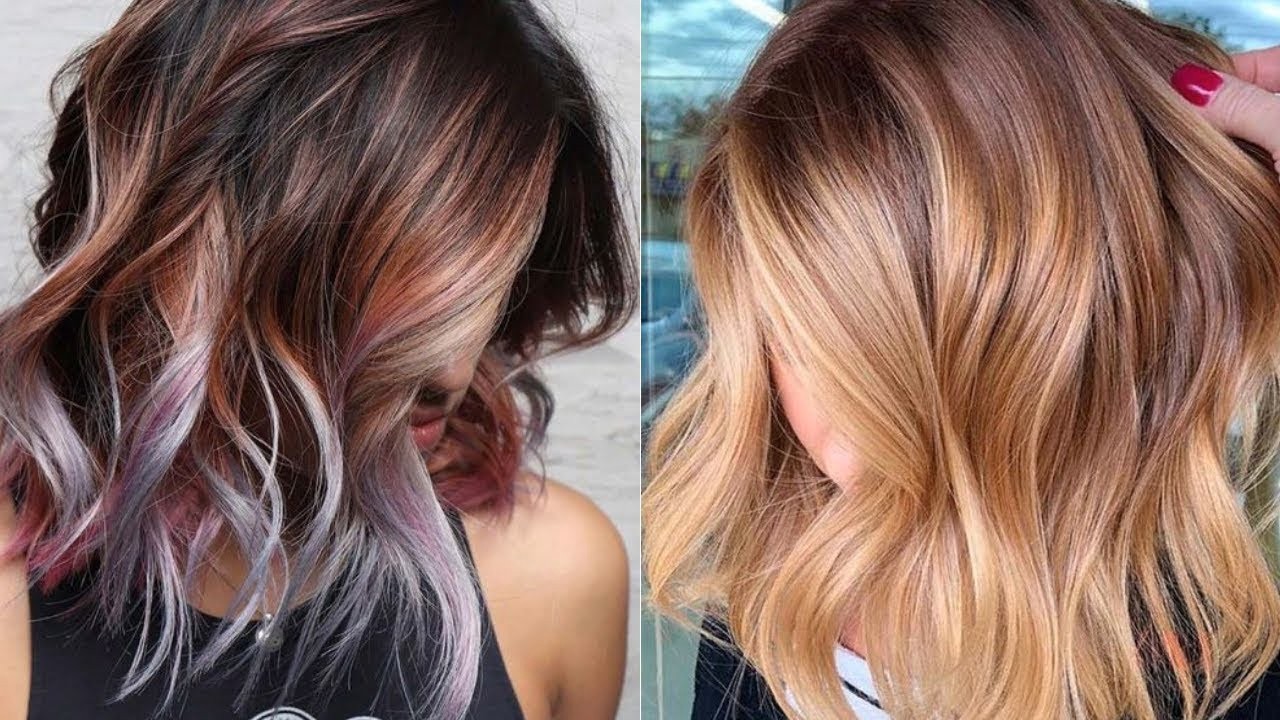Hair Colour Ideas, Techniques and Hair Colouring Trends

Hair colouring is one of the most popular hairstyle alterations since it is a beautiful and vibrant method to experiment with new looks. Not only can colours draw attention to many elements, but they also serve as a means of communicating emotions, tastes, and even an important part of who we are. However, the number of processes available is almost unlimited, as is the diversity of colour charts, and sometimes picking is difficult.
Given that it’s natural to feel lost, we want to present some of the hottest hair colours, techniques and methods so you can learn all the basics of hair colour and determine for yourself which one is closest to your ideal appearance.
Hair Colouring Technique
Leading stylists change trends on a yearly (and even seasonally) basis: new colouring procedures emerge, while others, on the other hand, are rendered outdated. However, there are several alternatives that are guaranteed to work. Our list of the most common dying methods is sure to remain relevant for a long time.
Full Hair Colour
Hair colour that covers the whole head is termed “single process” since it only uses one colour.
Single-process hair colour has three degrees of permanence:
Permanent: In this case, ammonia and peroxide are used in a combination that permanently alters the colour of your hair. The fact that it is “permanent” is due to the fact that a chemical shift has occurred.
Demi Permanent: Contains no ammonia, but does include peroxide to aid with colour absorption. It usually takes 12 to 24 shampoos to get rid of it.
It usually takes 12 to 24 shampoos to get rid of it.
Semi Permanent: The semi-permanent hair colour does not include ammonia and is more like a stain on the hair’s surface. Most of the time, it can be removed with 6 to 12 shampoos.
Highlights
Hair highlights are a kind of colouring that is used to brighten certain portions of the hair in order to create contrast with the colour of the rest of your hair. The name of this style of colouring refers to the technique’s goal of simulating the impact of the sun’s rays on the hair, particularly during the summer.
Hair Colouring Technique: Two Tones
These are all hair colouring treatments that use just two shades: one as a basis for the hair and another to lighten, darken, or enrich the strands with colour. Two-tone dye jobs might be difficult to come by in the era of balayage. The majority of hairdressers like to use three or more hues to precisely integrate the highlights into the hair. However, some of them continue to exist in modern life.
Hair Colouring Technique: Reflexes Highlights
Typically, highlights are brighter streaks applied to the hair to accentuate its natural texture and brighten the strands. They vary in terms of colour, size, and positioning. Many women use highlights to gradually go from a darker to a lighter base hue without experiencing excessive fading. Stripes must be quite narrow in this scenario. When larger chunks of text are highlighted, they are referred to as thick highlights.
Highlights may be applied directly to the top of the head, strategically at the front, on the top layer, or simply at the ends. In other words, whenever your stylist notices a deficiency in dimension.
Highlighting looks excellent on both long and short hair and is equally effective on blondes and ladies with dark or light brown hair.
Hair Colour Technique: Babylight Highlights
As a result of its naturalness, this style is still winning. Starting from the root, these highlights brighten the colour of your foundation by 2 or 3 shades. This is a wonderful choice if you’re just starting off with colour. With this method, you don’t have to be a certain colour to use it.
As long as the hair is natural and can be dyed immediately, I prefer to work this way. For me, this means that I can have far better hair quality than if we were to bleach my hair.
Hair Colour Technique: Balayage Highlights:
A very natural gradient from root to tip may be accomplished with this French method, which is also known as “sweeping.”
Hand-sweeping the colour through tiny triangular sections of hair creates natural-looking highlights. A significant benefit of this approach is that your hairdresser may make your hair as unique as you are by custom blending colours and applying them precisely to shape and frame your features.
Additionally, Balayage is a low-maintenance treatment, making it ideal for busy females. As the hair grows out, the natural movement from shade to shade conceals the roots.
Balayage cannot be used to conceal grey hair, unless you wish to include them into your appearance. If you need to conceal a large amount of grey, your only alternative is a full coverage colour. Do you need just minor touch-ups? Consider using the specialised root correctors.
Hair Colour Technique: Bronze Highlights:
Brown and other coppery hues look great with this method.
This method involves blending two shades, one that is more golden blonde and another that is more warm brown, while still keeping the roots of the client’s original hair colour exposed.
Hair Colour Technique: Ombre Highlights:
It is derived from the French word for “shadows.” This kind of highlight is one that begins as a very mild one and gradually becomes darker and darker. All skin tones may benefit from this method, which increases the amount of visible light on your face.
Hair Colour Technique: Blonde Highlights:
It has a lovely golden blonde colour. This colour is unquestionably very natural; it illuminates the face and enhances the radiance of the hair. There are numerous very little micro highlights applied all throughout the hair to create a very natural-looking result. Depending on the base colour, they may be done in extremely light or dark tones, as long as we do not brighten more than three tones.
Hair Colour Technique: Californians Highlights:
In this technique, the ends are lighter than the roots, which gives the hair a worn-in appearance reminiscent of a surfer’s hair.
Because of the way Instagram portrays works that take experts 5 to 6 hours to do, and the smartest among them do it in 2 hours!!!, many hairs have been harmed by this highlight approach.
Coppery blonde highlights are used to mimic this style, when the hair is coloured from the centre to the ends in coppery blonde. The outcome? The tips are much lighter than the root, with a bold and contemporary look. This is a great product if you’re looking to add some brightness to your hair colour and don’t want to go overboard with it. With regard to both long and short hair. And what is the ideal? Summer is the best time to wear this hairstyle.
Hair Colour Technique: Fantasy Wicks:
They’re a little dated, but they’re back. All of those thick, designated wicks from which we’d run so far. When you lift up your hair, the bangs are kept free, focusing more on defining the face. The revised version aims to include the shade so that the contrast is less pronounced.
Silver paper or wick paper is often used in this method. Bleach the hair till the desired length is achieved, and then colour it to the desired shade. Fantasy hues are for those who dare to be different.
Overview
Finally, let us close. Whatever reason you’ve chosen to colour your hair (to renew your present tone, completely transform your appearance, or conceal greys, for example), you have a plethora of procedures to select from. This includes solid dyes, highlights, ombre and frosty tips, as well as unique and imaginative hues. Especially now that you understand how to avoid the damaging effects of chemicals on your hair, how to properly care for your new hue after you leave the salon, and even how to effectively do a home dye job. All anxieties vanish, correct? We wish you fantastic results with every hair colour application! Best of luck!

